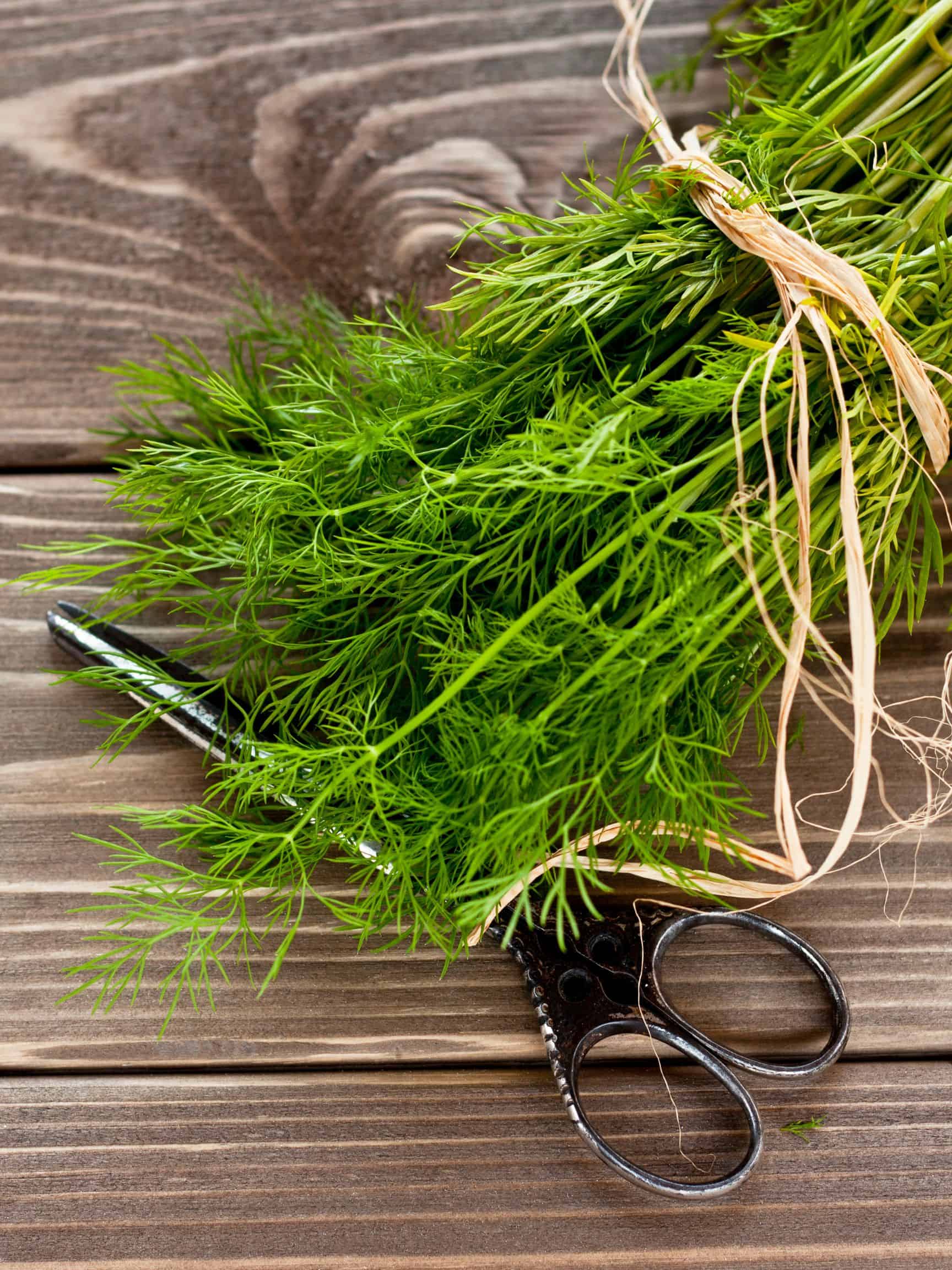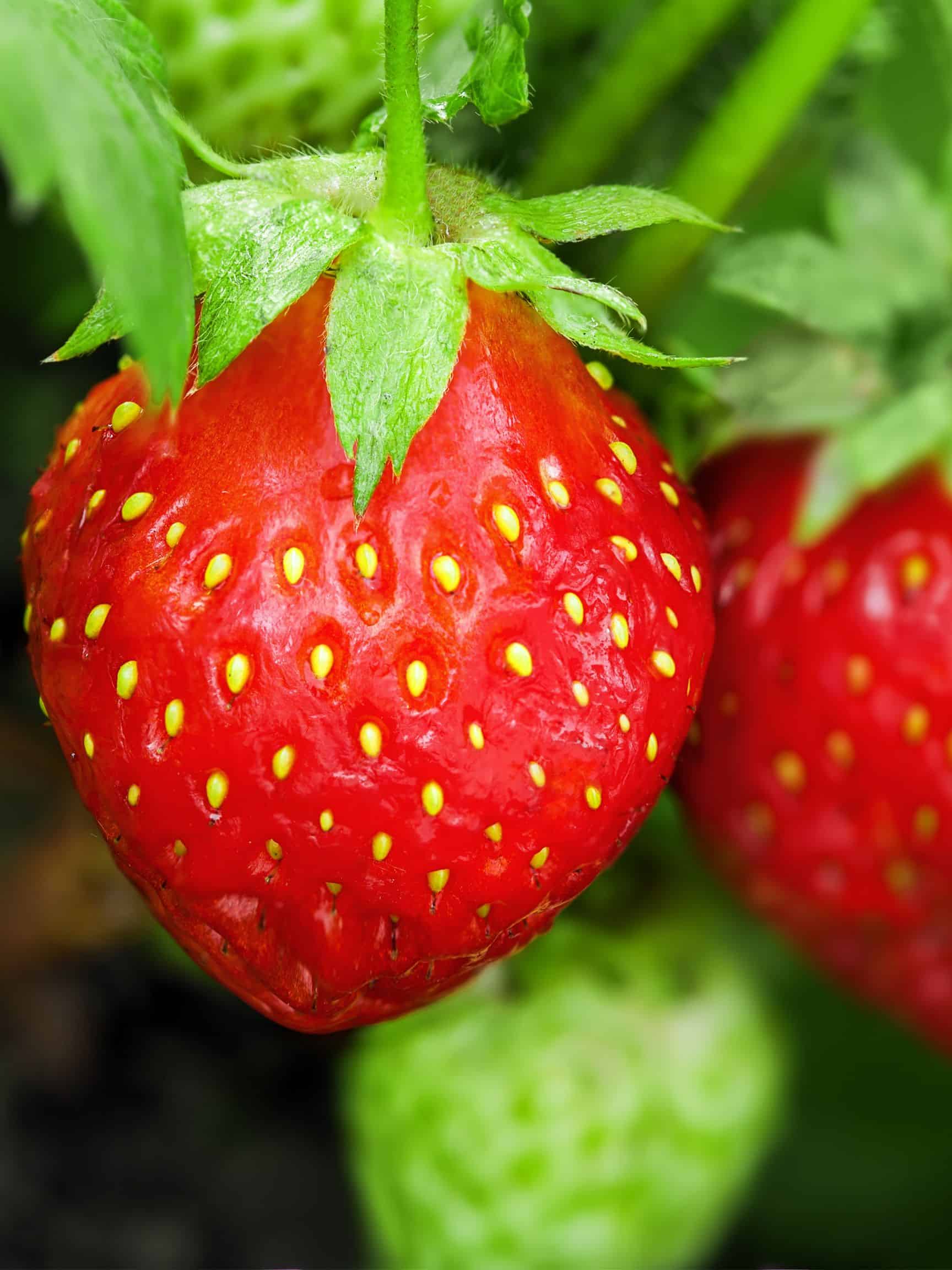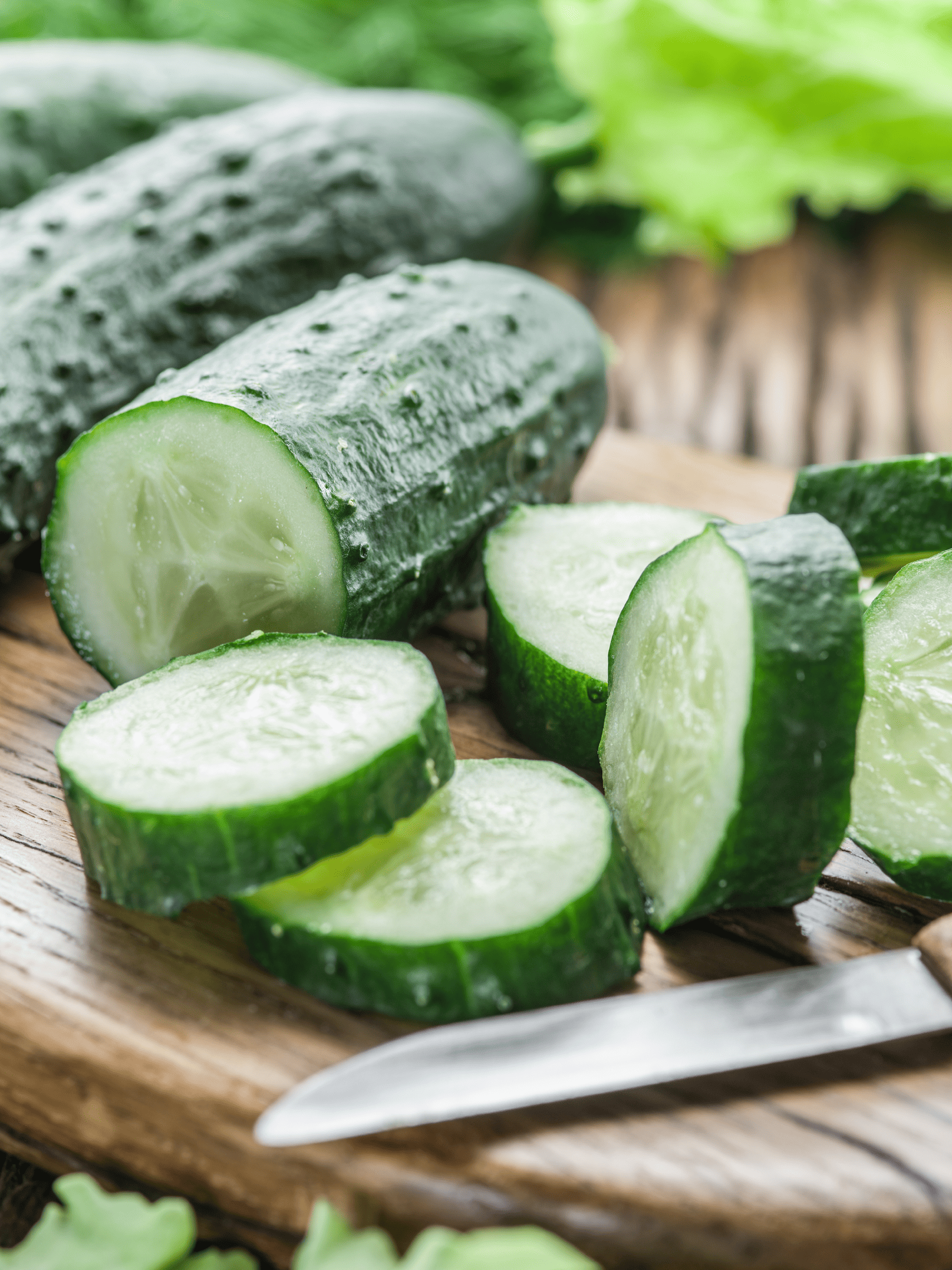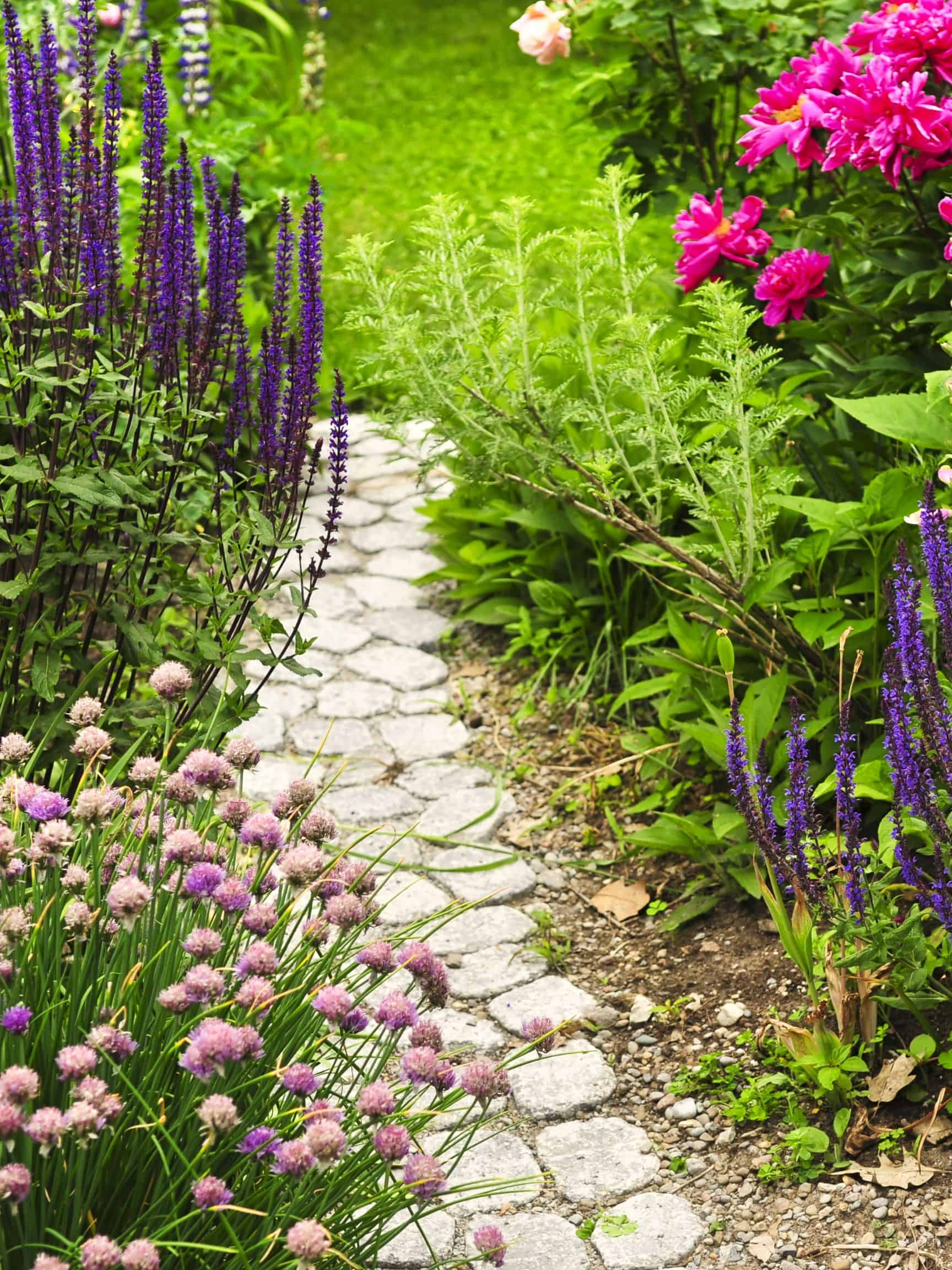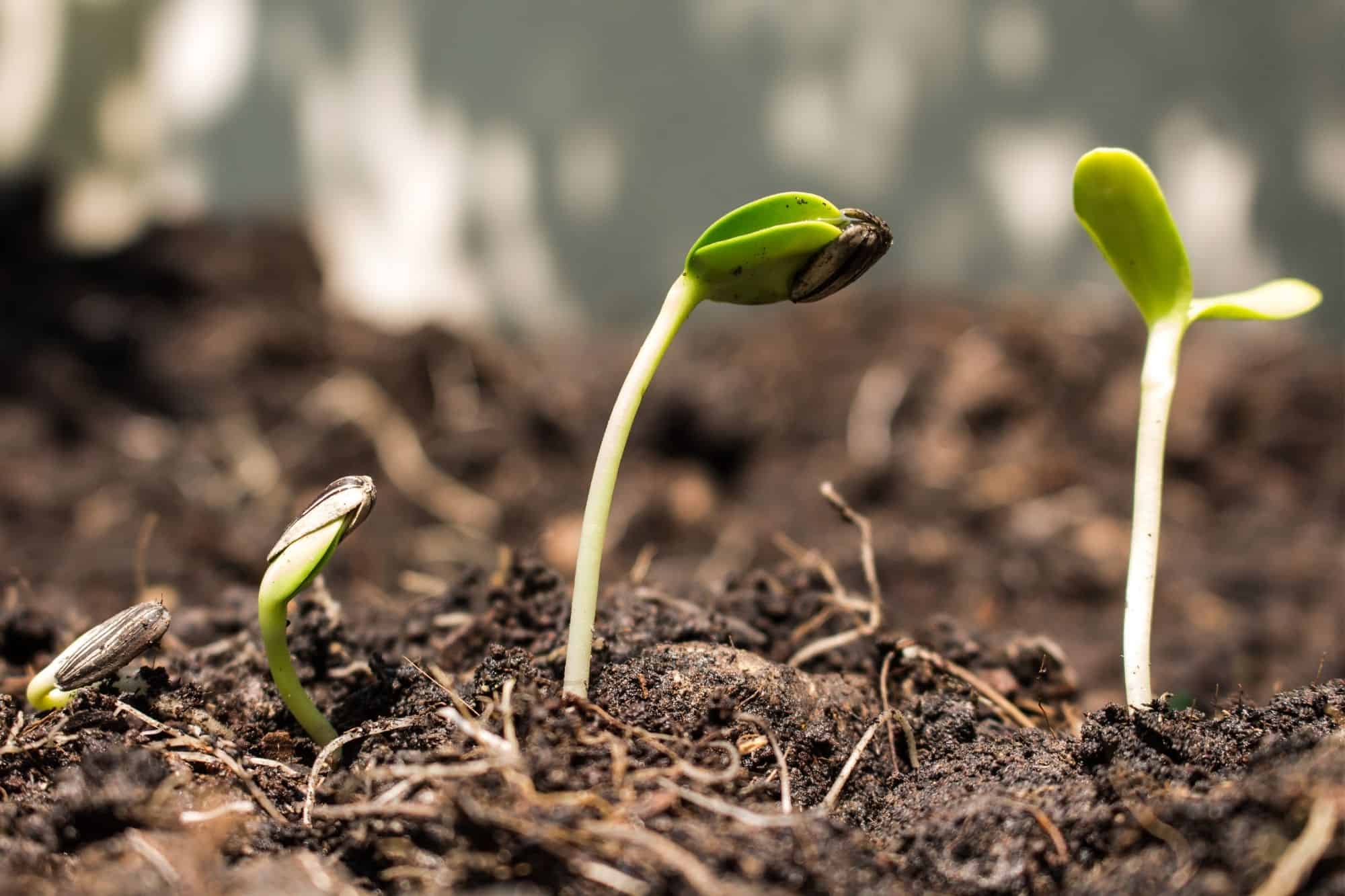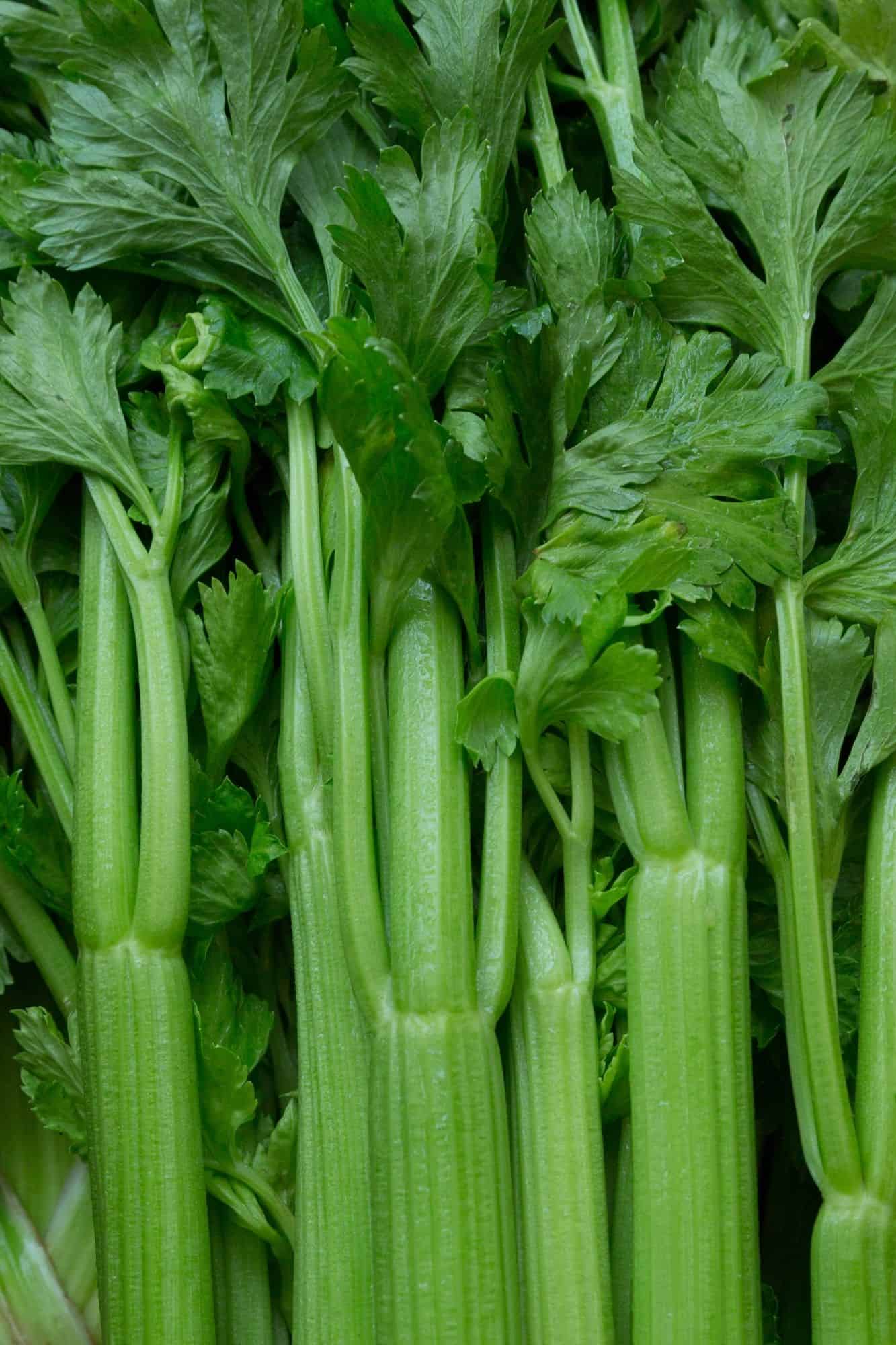How To Start Pepper Plants From Seed
Starting pepper plants from seed is simple for experienced gardeners and newbies alike. Follow a few simple steps to transform your pepper seeds to hearty, high producing plants. Whether you’re a fan of sweet bell peppers or the fiery heat of habaneros, growing your own pepper plants from seed allows you to choose exactly the varieties that appeal to you. An added bonus? It’s a cost-effective way to add peppers to your diet with many options for enjoying them fresh, frozen, or dehydrating them for later! Get ready to fill your garden or containers and learn how to start pepper plants from seed.

My northern Alberta (Zone 3) garden is too cold with too short of a growing season to direct sow peppers making starting pepper seeds indoors in late winter a necessity. I have been starting peppers from seed for over five years and have learned some valuable lessons and well as some tips and tricks that i’ve shared below. Happy planting!
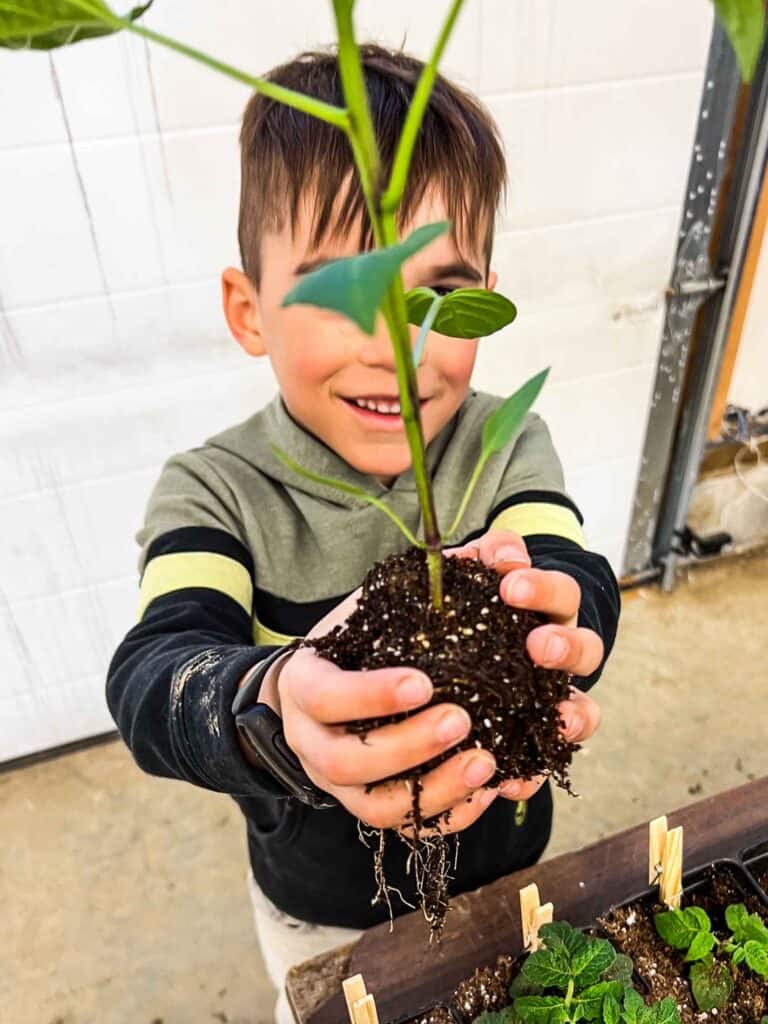
How to Start Pepper Plants Indoors
Starting pepper plants from seeds indoors is a great way to get a head start on the growing season. Here’s a step-by-step guide to get you growing peppers this garden season:
Step 1. Prepare Your Pots: Choose pots with drainage holes and fill them with a seed starting mix. This type of soil is light and fluffy, which helps the seeds to germinate. You may also choose to sow them into soil blocks (my preferred method of seed starting).


Step 2. Plant Your Seeds: Sow your seeds about 1/4 inch deep in the soil. Avoid planting them too deep as this can hinder their growth and slow germination. At this point you may choose to use a heated germination mat to help your seeds along. Pepper seeds germinate best at temperatures between 85 to 90°F. Remove the heated mat once the majority of your peppers have surfaced.


Step 3. Label Your Pots: It’s important to label your pots or seed trays so you can remember which variety of pepper is in each one. I have used various methods of labelling including store bought spikes, recycled plastic cutlery handles, popsicle sticks, and I recently had my kiddos make tags by cutting up 4L milk cartons that had been washed out!

Step 4. Water the Seeds: After planting, water the seeds gently. The soil should be damp but not waterlogged. Continue to monitor your soil moisture, ensuring that the soil doesn’t dry out too much or become water logged.
Step 5. Wait for Germination: Pepper seeds can take anywhere from one to three weeks to germinate. Be patient and keep the soil consistently moist during this time. It helps to cover your seeds with plastic wrap, a plastic bag, or a clear humidity dome for the first week or two, removing the wrapping or cover once you notice seedlings starting to poke through.

Step 6. Adjust Light + Air: If you are using grow lights, keep them 2-3 inches above your seedlings, adjusting them as the plants grow. If you do not have a grow light, place your peppers by sunny window, south facing if possible. As soon as you see your seeds sprouting, it is a good idea to get air on them. I use a simple oscillating fan on low. This helps to ensure that the stems of your pepper plants are strong and not leggy.
Step 7. Transplant Seedlings: Most sources and seed packages recommend starting pepper seeds indoors 8 to 10 weeks before the average last frost date. See this calculator to help you determine when you might be in the clear to transplant your seedlings outdoors. Once the risk of frost has passed, and the seedlings have at least two sets of true leaves, they can be transplanted outdoors. Plant peppers in a sunny area where they will get at least 6-8 hours of direct sunlight. Protect them with cloches or row cover if the danger of lower temperatures arises.
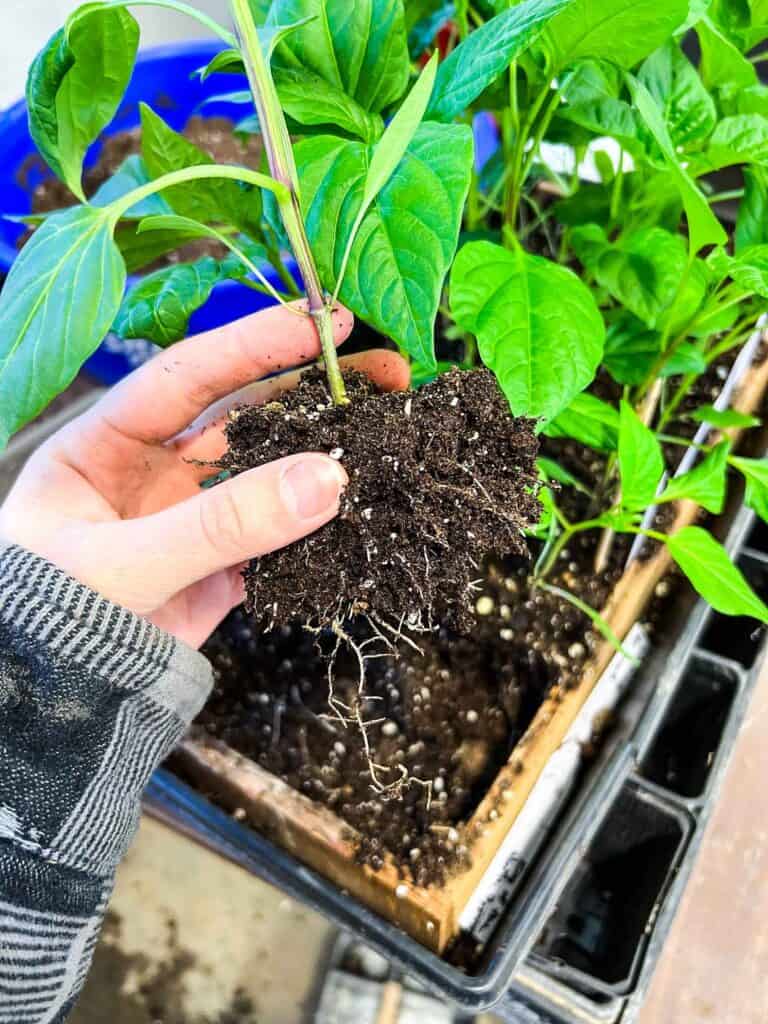

✰✰ In my experience, pepper plants tend to get leggy while they are waiting to be transplanted. Pepper stems can be planted deep into the soil, leaving 2-3 sets of true leaves above the soil (much like tomatoes). This helps to keep the pepper plants stable and strong throughout the growing season. ✰✰
Remember, every pepper variety is different, so it’s important to read the specific instructions on your seed packet for the best results.
How To Direct Sow Pepper Seeds
Starting peppers from seeds by direct sowing outdoors can be a rewarding process, but it does require careful timing and preparation. Peppers should only be directly sown into the ground in warm climates, USDA growing zones with a longer growing season (zone 8 and up).
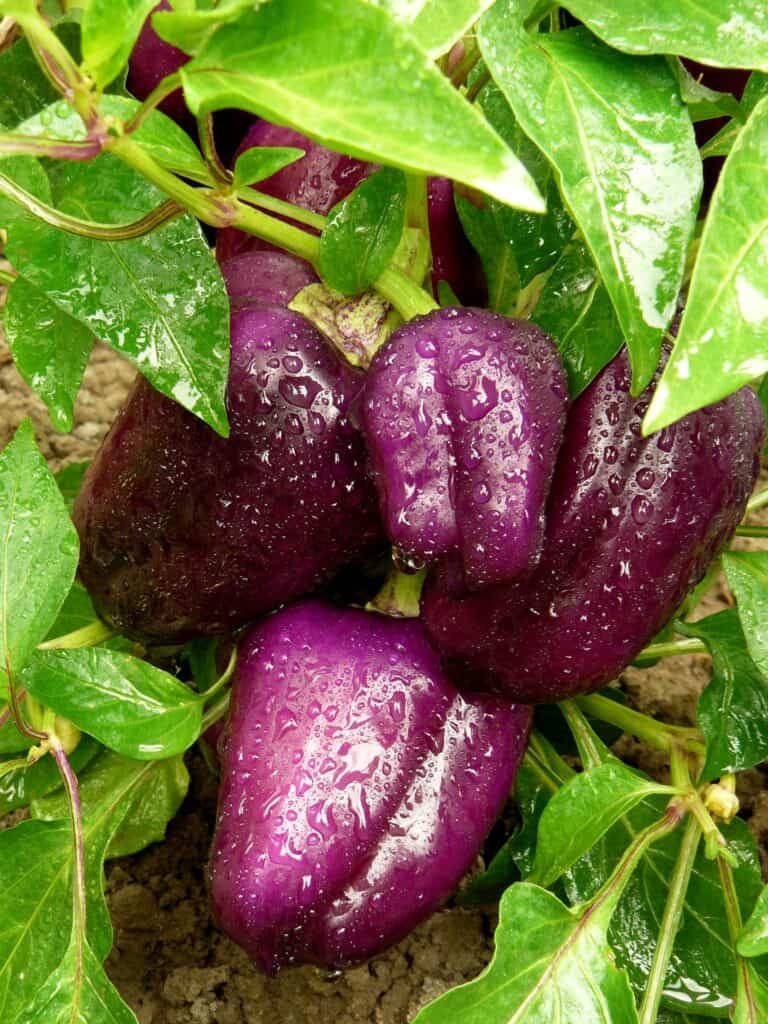

- Choose the Right Time: Peppers need warm soil to germinate, so you should wait until all danger of frost has passed and soil temperatures have consistently reached 60-70 degrees Fahrenheit (15-21 degrees Celsius).
- Prepare the Soil: Choose a location with full sun and well-draining soil. Improve the soil with compost or a slow-release fertilizer before planting to provide nutrients for your seedlings.
- Sow the Seeds: Plant the seeds 1/4 inch deep in the soil, spacing them about 1-2 inches apart. Cover the seeds with a fine layer of soil.
- Water Carefully: Water the area gently but thoroughly after planting. Keep the soil consistently moist but not waterlogged.
- Thin Seedlings: Once your seedlings are about 2 inches tall, thin them to be about 18-24 inches apart. This gives each plant enough room to grow without competing for resources.
- Keep an Eye on Temperature: Peppers are heat-loving plants, so if a cold snap is forecasted or cold nights, consider covering your young plants with a cloche or row cover to protect them.
- Care for Your Plants: As your peppers grow, keep them well-watered and watch for pests and diseases. When the plants are about a foot tall, a layer of mulch can help keep the soil moist and warm.
Remember, peppers can be slow to germinate, especially in areas cooler soil temperature, so patience is key. With proper care, your pepper seeds should sprout and grow into productive plants over the course of the growing season.
How To Harvest Seeds From Grocery Store Peppers
Harvesting seeds from store-bought peppers is a process that requires careful selection of mature, high-quality peppers and proper seed extraction and storage techniques. Many store bought pepper plants are hybrids and you run the risk of growing a completely different variety than you started with. Here’s a step-by-step guide.
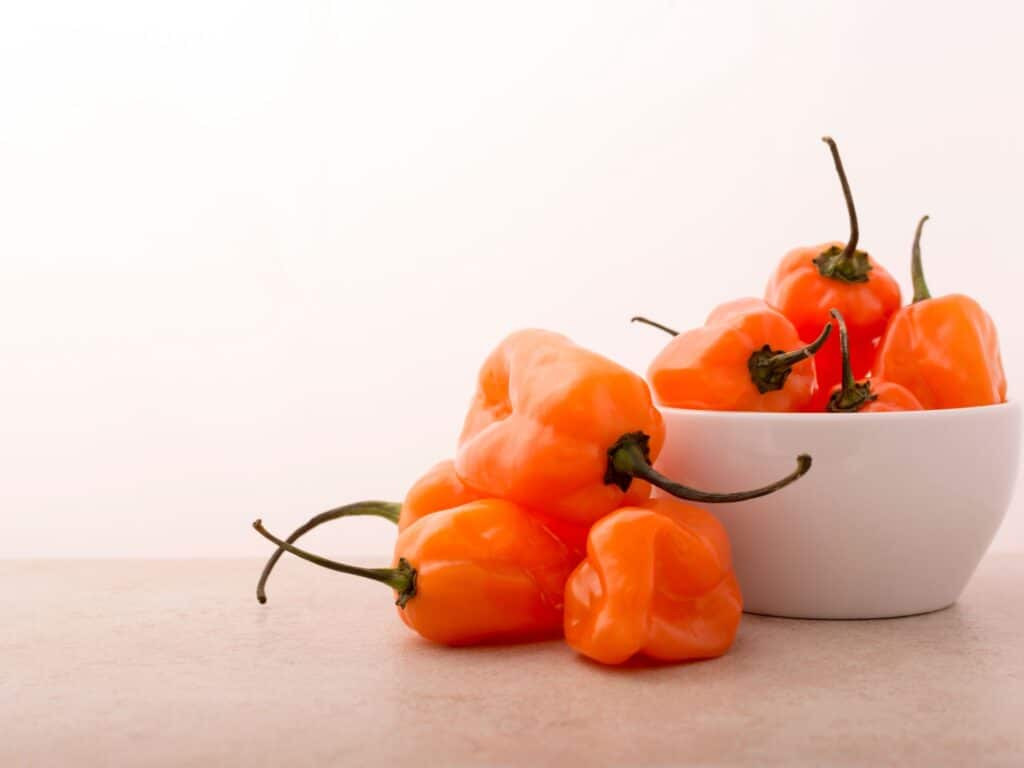
- Select Mature Peppers: Choose ripe peppers from the store. The color of the pepper indicates its maturity – green peppers are usually not mature, while red, yellow, or orange peppers are typically fully matured.
- Remove the Seeds: Cut the pepper open and gently scrape the seeds out. Try not to damage the seeds as you extract them.
- Inspect the Seeds: Look over the seeds and remove any that are damaged or discolored. Only healthy-looking seeds should be kept for planting.
- Dry the Seeds: Spread the seeds out on paper towels or newspaper and allow them to dry completely. This could take about a week or so. Ensure the seeds are spread out in a single layer and not clumped together.
- Store the Seeds: Once your seeds are completely dry, they should be stored in a cool, dry place. Label your seeds with the date and variety of pepper and store them in a sealed container to maintain their viability.
- Plant the Seeds: When ready to plant, prepare a seed starting mix in a container with drainage holes or in soil blocks. Plant the seeds about 1/4″ deep.
Seeds harvested from store-bought peppers may not always germinate due to factors such as hybridization or immature seeds. However, it’s still worth giving it a try and you might just end up with some successful sprouts!
Tips + Tricks For Healthy Pepper Seedlings
Seed Storage: For best results, use fresh seeds, reserving older seeds for less important crops. Seeds should be stored in a dry, cool, and dark location for the longevity.
Soil Blocks: Soil blocks are my secret weapon for healthy seedlings and a waste free alternative to disposable plastic seed starting trays. Use soil blocks when starting your pepper plants from seed to create strong root systems (improved airflow and oxygen levels) and easily transplanted seedlings (less root bound). Soil blocks are a cost efficient way to start pepper seedlings. Check out this easy soil blocking guide for more information. Not up for soil blocking just yet? Start your pepper seeds in cell packs, plug trays, recycled egg cartons, peat pots, or other containers that you have on hand.
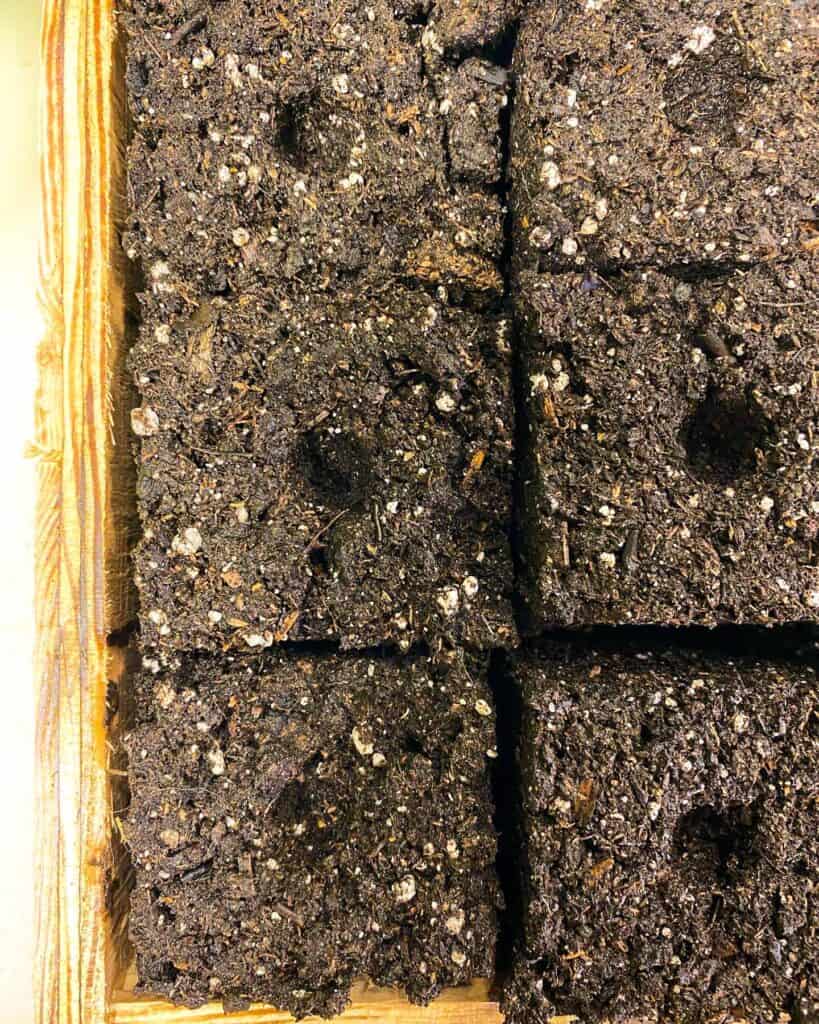
Related: Wooden Soil Block Trays – 30 Minute DIY
Heating Mat: Using heated seed germination mats can significantly improve the success rate and speed of pepper seed germination. Although they aren’t required for starting peppers, they are yet another tool that will help you have high success when starting pepper plants from seeds. Seedling heat mats can be ordered from most seed stores, seed catalogues and purchased in person from local greenhouses and home and garden centers. No heat mat? No problem, keep your pepper starts in a warm location and you should be just fine!
Airflow: Airflow plays a crucial role in both seed starting and the hardening off process of pepper seedlings. When starting pepper seeds, good air circulation can help prevent fungal diseases, especially damping-off, which is a common problem when starting pepper plants. A fan is crucial in your seed starting setup to help reduce these issues by keeping the air moving and reducing the chance of stagnant, moist conditions. Any small fan can be used!
Seed Starting Medium: A good seed starting medium is important when starting pepper plants indoors. Look for a light and fluffy mix containing peat moss and vermiculite that has good drainage and is low in nutrients (can cause damage to fragile seedlings). Your seed starting medium should be sterile with a PH of 6.0-7.0. I like to use PRO Mix seed starting medium– it is easily found at your local garden center; however, you can also make your own. This guide from Garden Betty shows you how to make seed starting mix from scratch.
Frequently Asked Questions About Starting Peppers From Seed
Pepper seeds should be planted around 1/4 inch deep into seed starting medium.
Pepper seeds can take from 1-2 weeks for less spicy varieties whereas spicier varieties such as ghost peppers and Carolina Reaper peppers can take 3-4 weeks. Speed up germination by using a germination mat. Always refer to your seed packets for germination information.
According to Burpee.com, most sweet peppers mature between 60-90 days and hot peppers can take up to 150 days to reach maturity.
No, pepper plants do not have to be soaked or cold stratified before planting!
Pin It!



